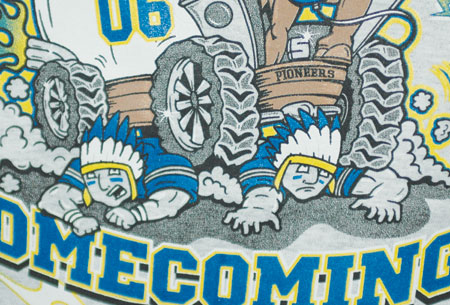The number of American Indian students at UND is down, although not by much, said Leigh Jeanotte, director of the American Indian Center at UND. But the numbers really should be increasing because UND's efforts to recruit American Indians are intense. The university has full-time recruiters as well as top-notch programs geared specifically for American Indians. Most of these programs, by the way, are federally funded.
I believe the decline in the number of Indian students is due in part to UND's nickname issue. So, I was a little concerned when a recent discussion among Grand Forks business leaders about UND's bigger problem of declining enrollment didn't mention the divisive nickname issue.
I can personally vouch for the negative atmosphere in our community, based on e-mails I've received, personal incidents and anecdotal information from students. I also know that the “Fighting Sioux” nickname seems to bring out the worst in some members of our communities. Who wants to spend time in a negative atmosphere?
In a study published in a 2007 issue of Sociology of Sport Journal, UND graduate Dana Williams concluded that American Indian students may start out at UND with faces glowing from all the new and great things they see here. But then, those students' support for the nickname tends to decrease the longer they attend UND, the study found.
Unfortunately, if they'd read some of the comments I mentioned or listen to students who attend or have attended UND, they'd realize--as have many of UND's American Indians--that some members of the community do not seeing today's Lakota and Dakota as warriors.
It is the warriors of the 1800s--who fought for their lives, rode the Plains and took on all comers--who probably are the “Fighting Sioux” of the nickname. As for today's Indians, the comments on the Internet use terms such as lazy, alcoholic and poverty-stricken when referring to today's tribes.


3 comments:
Antiquated terminology and stereotyping in both camps - UND's by their portrayal of NA mascot, Rob's by assumption that warriors are only those who fight physically against another human foe.
May I suggest another consideration for a 'modern-day warrior' from our NA tribes? That would be a person who has overcome (or is trying hard to overcome) incredible challenges, hardships or negative environments to become a strong, vital and contributing member of their tribe and society at large? A warrior need not raise a weapon against a foe with defined shape, form and mass; but rather wage war against domestic violence, poverty, injustice, illiteracy, loss of traditional teachings and native language, reservation despair and environmental misuse or harm - just to name a few.
To suggest that the NA Warrior is an antiquated term and an extinct breed is to see no value to those tribal members who battle everyday against unseen enemies - most insidious of which is ignorance and apathy. Many great NA Warriors have been found in the 20th century, such as: Vine Deloria, Sherman Alexie, R. Carlos Nakai, Verdell Primeaux, Dennis Banks, Ben Nighthorse Campbell, Betty Mae (Tiger) Jumper, Buffy Sainte-Marie, and Wilma Mankiller, to name but a few.
And the next generation of NA Warriors for the 21st century are coming of age and will be facing insurmountable challenges, as did their contemporaries.
To diminish their struggle for education, protection of tribal values and traditions, protection of native resources and the environment and a future for all their relations is to cast another stereotype onto them – that of the defeated or insignificant.
My assumption is that UND uses the "Fighting Sioux" nickname primarily for its sports teams. In which case it's the university, not me, who applies the name primarily to physical warriors.
When UND wants to use "Fighting Sioux" primarily for its math squad or debate society or theater group and not for its sports teams, then you may have a point. Until then, no.
Actually, I offered arguments similar to yours in my writeup on Indians as Warriors. Feel free to check it out.
The short version is that "warrior" isn't a stereotype if you apply it to artists, educators, or activists. But that isn't what UND is doing, so that doesn't apply here.
Post a Comment